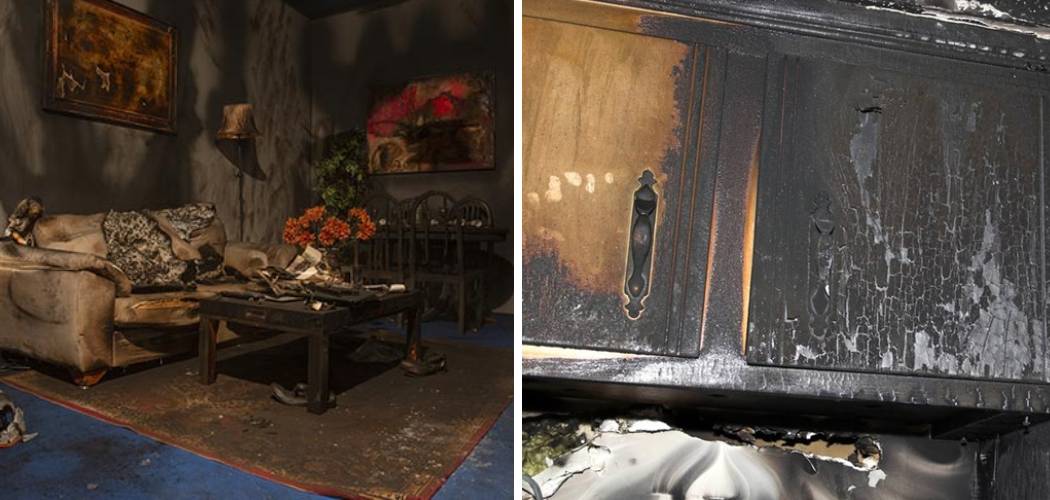A home is filled with furniture that can last for decades, preserving memories and providing comfort. Unfortunately, accidents like a house fire or smoke damage can take their toll on your treasured items as the smoke particles deposit into fabric and wood surfaces, causing discoloring and an unpleasant smell.
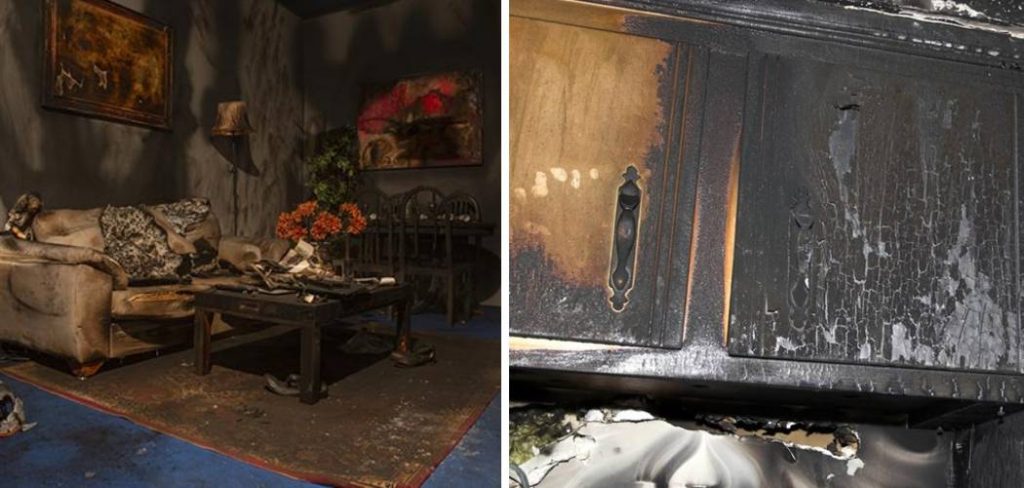
Nothing quite compares to the smell of a burning fire. Whether it’s from your fireplace, an outdoor campfire, or an unfortunate incident involving smoke and ashes – you may need to know how to clean smoke-damaged furniture.
If you have the misfortune of dealing with such circumstances in your own home, you may feel overwhelmed by the task of restoring your damaged pieces to their former glory.
We’ll go over which products work best for cleaning smoked-damaged surfaces like walls, carpets, and upholstery and provide tips on preventing future issues with fire-related damage.
So, if your property has fallen victim to some type of smoky trauma – let us help you restore things back to their former condition! We’ll share some tips on cleaning smoke-damaged furniture so that it looks lovely again.
Necessary Items for Cleaning Smoke-Damaged Furniture
Before you begin the cleaning process, there are a few items that you will need to have on hand. These include:
- Protective Gear
- White Vinegar
- Baking Soda
- Dish Soap
- Bucket
- Spray Bottle
- Sponges and Towels
It is important to have protective gear such as gloves, goggles, and a face mask to prevent any potential harm from the chemicals used in the cleaning process. White vinegar, baking soda, and dish soap are all-natural and effective cleaners that can help remove smoke odors and soot from furniture surfaces. A bucket, spray bottle, sponges, and towels will be used for mixing and applying the cleaning solution.
10 Steps on How to Clean Smoke-damaged Furniture
Step 1: Ventilating the Affected Area
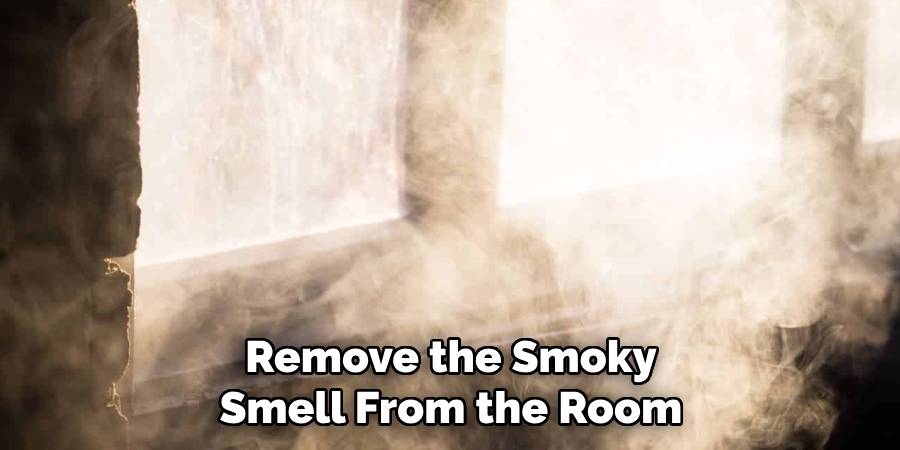
The first step in cleaning smoke-damaged furniture is to ventilate the affected area. Open all doors and windows to allow fresh air to circulate and remove the smoky smell from the room.
Step 2: Wearing Protective Gear
As mentioned earlier, it is important to wear protective gear before starting the cleaning process. This will prevent any chemicals from causing harm to your skin, eyes, or lungs.
Step 3: Removing Loose Soot
Using a dry sponge or cloth, gently remove any loose soot from the furniture surface. Be careful not to press too hard, as it may cause the soot particles to embed deeper into the fabric.
Step 4: Vacuuming
Next, use a vacuum with a brush attachment to remove any remaining soot particles from the furniture. Be sure to cover all surfaces, including the nooks and crannies.
Step 5: Mixing the Cleaning Solution
In a bucket, mix equal parts white vinegar and warm water. Alternatively, you can use a commercial smoke odor neutralizer or an enzyme-based cleaner specifically designed for removing smoke odors. These can be found at your local hardware store or online.
Step 6: Applying the Cleaning Solution
Using a spray bottle, apply the cleaning solution to the furniture surface. Be sure to cover all areas, including the back and sides of the furniture.
Step 7: Scrubbing and Wiping
With a clean sponge or cloth, scrub the furniture surface in a circular motion. This will help to lift any remaining soot particles and remove any stubborn stains.
Step 8: Rinse with Clean Water
After scrubbing, rinse the furniture surface with clean water. This will remove any excess cleaning solution and prevent it from leaving a residue on the furniture.
Step 9: Drying
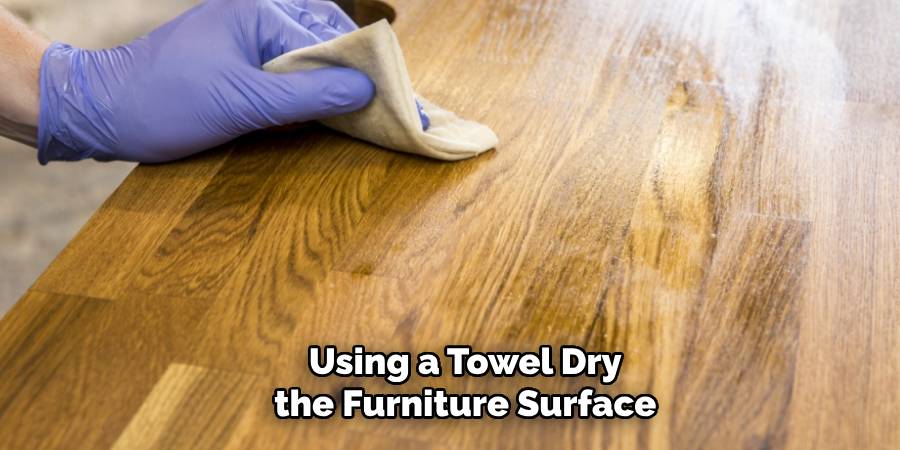
Using a towel, dry the furniture surface thoroughly. You can also use a fan or open windows to help speed up the drying process.
Step 10: Applying Baking Soda
If there are still lingering odors, sprinkle baking soda on the furniture’s surface and let it sit for several hours before vacuuming it off. Baking soda is a natural deodorizer and will help absorb any remaining smoke odors.
By following these tips on cleaning smoke-damaged furniture and preventing future damage, you can restore your furniture to its former condition and ensure the safety of your home. Always prioritize safety when dealing with fire-related incidents and seek professional help. So, next time you encounter a smoky situation, you’ll be well prepared to handle it with ease!
9 Tips on Preventing Future Smoke Damage
Overall, it is important to prioritize safety when dealing with smoke damage and follow proper cleaning techniques to remove soot and odors from furniture effectively. With regular maintenance and preventative measures, you can help prevent future smoke damage and keep your home safe from potential fire hazards.
Remember always to seek professional help if needed and stay safe while handling any fire-related incidents.
1. Fireplace and Chimney Maintenance
Regularly cleaning and inspecting your fireplace and chimney can help prevent smoke damage from occurring. Make sure there is no buildup of creosote, a flammable substance that can cause chimney fires.
2. Proper Fire Building Techniques
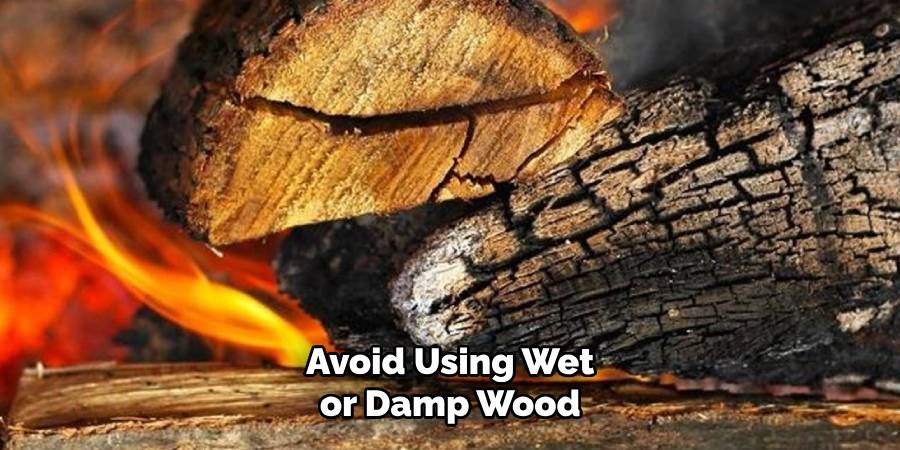
When building a fire, make sure to use dry and seasoned wood. Avoid using wet or damp wood as it produces more smoke and can increase the risk of a chimney fire or smoke damage.
3. Properly Dispose of Ashes
After a fire, it is important to dispose of the ashes properly. Place them in a metal container with a lid and store them outside, away from combustible materials, until they are completely cooled.
4. Regularly Change Furnace Filters
By regularly changing your furnace filters, you can prevent smoke and soot particles from circulating in your home.
5. Keep an Eye on Candles
Never leave candles unattended, and make sure they are placed away from any flammable materials to avoid accidental fires.
6. Be Mindful of Cooking Oils
Be cautious when cooking with oils, as they can easily ignite and cause a fire. Keep a fire extinguisher in the kitchen, just in case.
7. Install Smoke Detectors
Make sure to have working smoke detectors installed throughout your home, especially near bedrooms and on each level of the house.
8. Have an Escape Plan
In case of a fire, it is important to have an escape plan in place. Review and practice this plan with your family regularly to ensure everyone knows what to do in an emergency.
9. Seek Professional Help
Always seek professional help to assess and repair any damage in a fire. They can also guide you on how to clean and restore your home and belongings properly. Safety should always be a top priority when dealing with smoke or fire incidents.
By following these tips, you can prevent future smoke damage and keep your home safe from potential fire hazards. Remember, safety should always be a top priority in any fire situation. Keep these prevention techniques in mind, and hopefully, you won’t have to deal with the aftermath of smoke damage again. So stay safe, and happy cleaning!
Frequently Asked Questions
Can I Use Any Cleaning Solution to Remove Smoke Damage?
Using a specific cleaner designed for removing smoke odors or natural alternatives such as white vinegar and baking soda is recommended. Avoid using harsh chemicals that may cause further damage.
How Often Should I Clean My Fireplace?
Your fireplace and chimney should be cleaned and inspected at least once a year to prevent creosote buildup and potential fire hazards.
Should I Use a Vacuum to Clean Smoke-damaged Furniture?
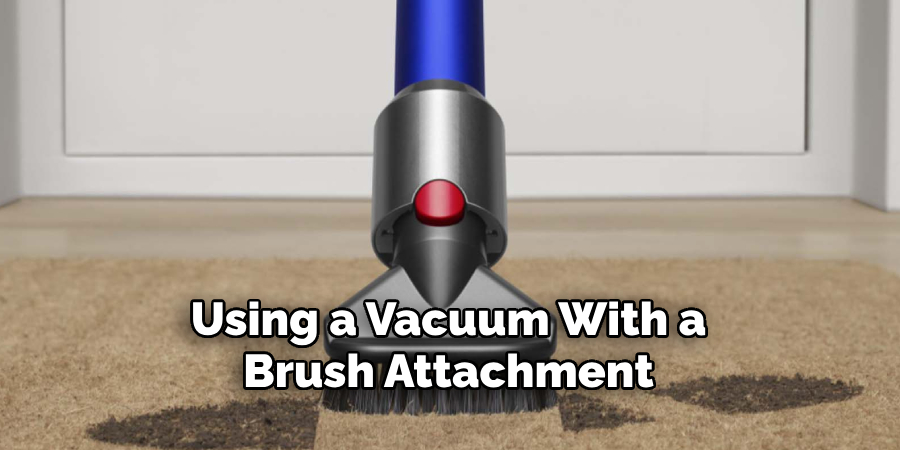
Yes, using a vacuum with a brush attachment effectively removes loose soot particles from furniture surfaces.
Is it Safe to Enter a Room After a Fire?
It is important to wait until the fire department declares the area safe before entering. Once cleared, wear protective gear and take necessary precautions when cleaning up smoke damage.
Can I Use a Regular Sponge to Scrub Furniture?
It is recommended to use a dry sponge or cloth to remove loose soot and a damp sponge or cloth with a cleaning solution for scrubbing. Avoid using abrasive sponges as they may further damage the furniture. Be sure also to wear protective gear while cleaning. Happy Cleaning!
Can I Prevent Smoke Damage Completely?
While it is impossible to guarantee complete prevention of smoke damage, regular maintenance and following safety precautions can greatly reduce the risk. Having an emergency plan and being prepared for any potential incidents is also important. Stay safe!
Conclusion
Smoke damage can be daunting and overwhelming, but with the right techniques and preventative measures, you can successfully remove soot and odors from furniture and prevent future damage. Remember to prioritize safety at all times and seek professional help if needed.
This blog post will discuss how to clean smoke-damaged furniture and remove odors, soot, and other debris left behind after a blaze has gone out.
By following these tips on how to clean smoke-damaged furniture, you can restore your home to its former condition and keep it safe from potential fire hazards. Always stay prepared and be cautious when dealing with fire-related incidents.
Happy cleaning! So, next time you encounter a smoky situation, you’ll know exactly what to do. Best of luck! Remember to stay safe and prioritize safety at all times.
